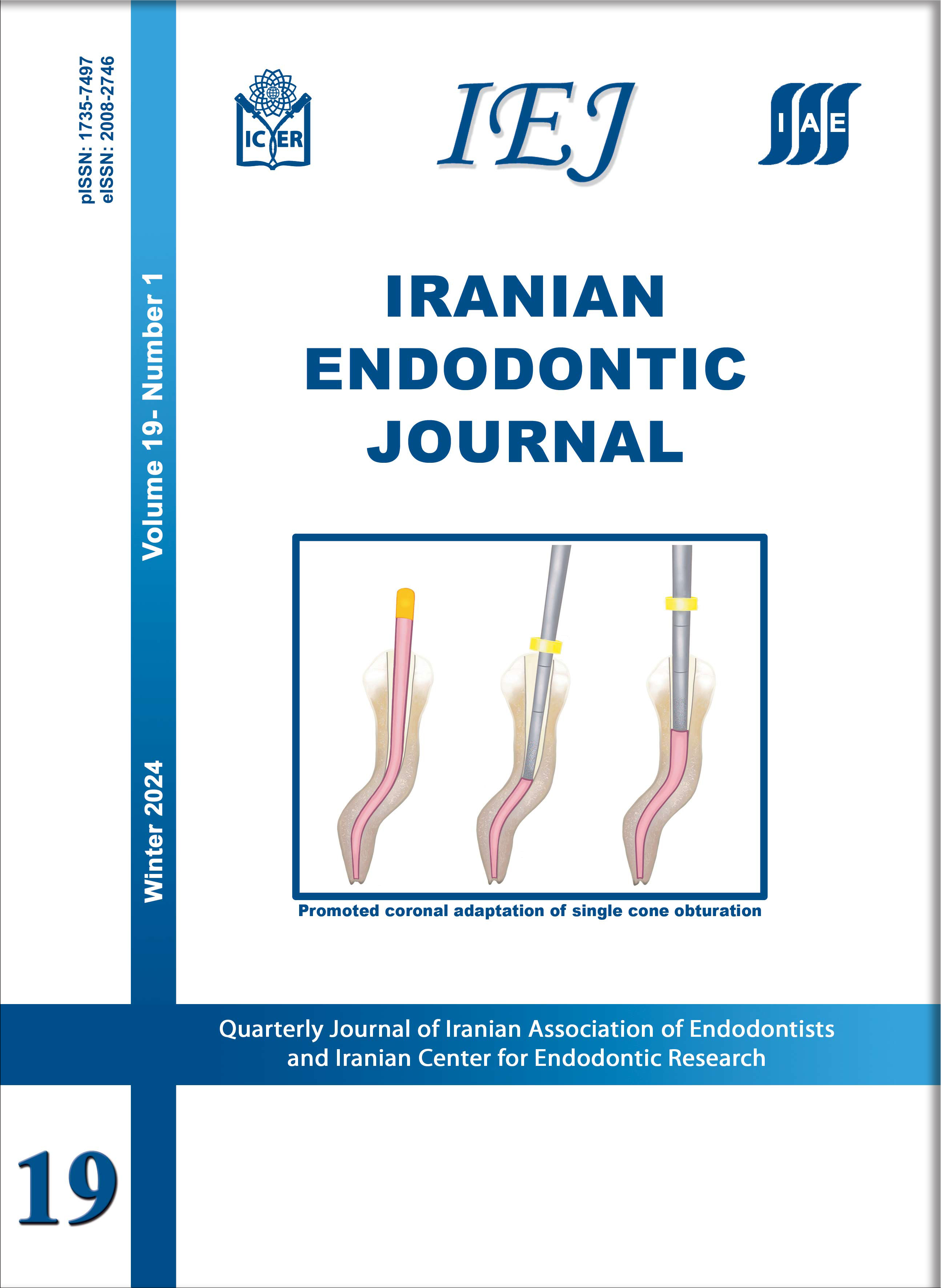Introduction: The current study aimed at determining the prevalence of complete isthmii in permanent teeth, using cone-beam computed tomography (CBCT) in a selected Iranian community. Methods and Materials: In this cross sectional study, 100 CBCT images (from 58 female and 42 male patients) including 1654 teeth (809 maxillary and 845 mandibular teeth) were evaluated. Each tooth root was evaluated in axial plane (interval, 0.1 mm; thickness, 0.1 mm) from the orifice to the apex and from the apex to the orifice to detect the presence of complete isthmus. Scans of teeth with complete isthmii were reevaluated in axial, sagittal, and coronal planes with the thickness, 0.1 mm. Presence and absence of complete isthmii in each tooth was reported. The root canal was divided into 3 equal parts (cervical, middle and apical thirds), and isthmii were classified with respect to the start and end points. Findings were classified into 6 categories with respect to the start and end points of the isthmii: 1) the beginning and end in the cervical third; 2) the beginning in the cervical third and end in the middle third ; 3) the beginning in the cervical third and end in the apical third ; 4) the beginning and end in the middle third ; 5) the beginning in the middle third and end in the apical third and 5) the beginning and end in the apical third. Results: The prevalence of complete isthmus in permanent teeth was 8.6%, and the highest prevalence was reported in mesial roots of the mandibular first molars. In maxilla, the highest prevalence of complete isthmus was found in mesiobuccal roots of the maxillary first molars, whereas in canines and central incisors, no isthmii were detected. In the mandible, the lowest prevalence of isthmus was found in second premolars. In maxillary molars, isthmii starting and ending in the middle third of the root had the highest prevalence. On the other hand, isthmii in mandibular molars, from apical or middle third of the root beginning to the end of the apical third, had the highest prevalence. Conclusion: As the prevalence of complete isthmii was the highest in molars, endodontists should pay particular attention to accomplish a successful surgical or nonsurgical root canal therapy.
Keywords: Cone-Beam Computed Tomography; Root Canal Anatomy; Root Canal Isthmus




